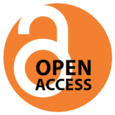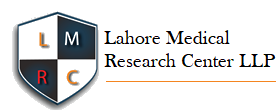Association of Oxytocin-Augmented Labor with Neonatal Jaundice Requiring Phototherapy: A Comparative Study
Oxytocin-Augmented Labor with Neonatal Jaundice Requiring Phototherapy
DOI:
https://doi.org/10.54393/pjhs.v6i6.3004Keywords:
Augmentation of Labor, Oxytocin, Neonatal Jaundice, Plasma BilirubinAbstract
Neonatal jaundice is a dangerous illness that, if left untreated, can lead to deadly consequences. Oxytocin seems to have a dose-dependent influence on elevated plasma bilirubin levels in cord blood, which are likely exacerbated by the breakdown of fetal red blood cells. Objectives: To determine the frequency of patients who undergo labour augmentation with the use of oxytocin and to compare the frequency of neonatal jaundice among the gravid female who labor with and without oxytocin augmentation. Methods: This analytical cohort study was conducted in the Department of Obstetrics and Gynaecology, Sughra Shafi Medical Complex, Narowal from 01-07-2021 to 31-12-2021. A total of 186 gravid females were included in this study. These patients were divided into two groups: Group A (augmentation with oxytocin, n=30) and Group B (spontaneous labour without oxytocin augmentation, n=156). Neonatal jaundice was assessed based on serum bilirubin levels and whether phototherapy was required. Data were analyzed using SPSS-25, with descriptive statistics and relevant comparisons between the groups. Results: The mean age of the participants was 26.9 ± 4.3 years. There were 56 primigravida (30.1%) and 130 multigravidas (69.9%). Neonatal jaundice requiring phototherapy occurred in 40% of neonates in Group A and in 19.2% in Group B. Conclusions: It was concluded that when maternal oxytocin is used to induce labor, newborn jaundice is more likely to occur and phototherapy is more frequently required. It is advisable to consider careful oxytocin dosing to avoid the risk of hyperbilirubinemia.
References
Makvandi S, Mirzaiinajmabadi K, Tehranian N, Esmily H, Mirteimoori M. The effect of normal physiologic childbirth on labor pain relief: An interventional study in mother-friendly hospitals. Maedica. 2018 Dec; 13(4): 286.
Aziato L, Acheampong AK, Umoar KL. Labour pain experiences and perceptions: a qualitative study among post-partum women in Ghana. BioMed Central Pregnancy and Childbirth. 2017 Dec; 17: 1-9. doi: 10.1186/s12884-017-1248-1. DOI: https://doi.org/10.1186/s12884-017-1248-1
Kendrick KM. Oxytocin, motherhood and bonding. Experimental physiology. 2000 Mar; 85(s1): 111s-24s. doi: 10.1111/j.1469-445X.2000.tb00014.x. DOI: https://doi.org/10.1111/j.1469-445X.2000.tb00014.x
Ito E, Shima R, Yoshioka T. A novel role of oxytocin: Oxytocin-induced well-being in humans. Biophysics and Physicobiology. 2019; 16: 132-9. doi: 10.2142/biophysico.16.0_132. DOI: https://doi.org/10.2142/biophysico.16.0_132
Fuchs AR, Romero R, Keefe D, Parra M, Oyarzun E, Behnke E. Oxytocin secretion and human parturition: pulse frequency and duration increase during spontaneous labor in women. American Journal of Obstetrics and Gynaecology. 1991 1;165(4): 1515-23. doi: 10.1016/S0002-9378(12)90793-0. DOI: https://doi.org/10.1016/S0002-9378(12)90793-0
Hermesch AC, Kernberg AS, Layoun VR, Caughey AB. Oxytocin: Physiology, Pharmacology, And Clinical Application for Labor Management. American Journal of Obstetrics and Gynecology. 2024 Mar; 230(3): S729-39. doi: 10.1016/j.ajog.2023.06.041. DOI: https://doi.org/10.1016/j.ajog.2023.06.041
Abdelgader A, Mustafa H, Tayib R, Saed W. Association Between Neonatal Jaundice and Maternal Oxytocin Infusion in Albayda Medical Center. Al Qalam Journal of Medical and Applied Sciences. 2022 Dec: 602-5.
Shukla J, Buch S, Chandrayan P. Effect of Oxytocin Augmentation on Neonatal Bilirubin Levels: A Case Control Study. Indian Journal of Forensic Medicine and Toxicology. 2022 Apr; 16(2): 101-4. doi: 10.37506/ijfmt.v16i2.17928. DOI: https://doi.org/10.37506/ijfmt.v16i2.17928
Jonas W, Johansson LM, Nissen E, Ejdebäck M, Ransjö-Arvidson AB, et al. Effects of intrapartum oxytocin administration and epidural analgesia on the concentration of plasma oxytocin and prolactin, in response to suckling during the second day postpartum. Breastfeeding Medicine. 2009 Jun; 4(2): 71-82. doi: 10.1089/bfm.2008.0002. DOI: https://doi.org/10.1089/bfm.2008.0002
Declercq ER, Sakala C, Corry MP, Applebaum S. Listening to mothers II: report of the second national US survey of women's childbearing experiences: conducted January–February 2006 for Childbirth Connection by Harris Interactive® in partnership with Lamaze International. The Journal of Perinatal Education. 2007; 16(4): 15. doi: 10.1624/105812407X244778. DOI: https://doi.org/10.1624/105812407X244778
Liu XY, Ling S, Liu Y, Jia S, Wang X, Li T et al. Dual oxytocin receptor-G protein signaling in the autoregulation of activities of oxytocin neurons. Neuroendocrinology. 2024 Feb; 114(2): 134-57. doi: 10.1159/000534490. DOI: https://doi.org/10.1159/000534490
Waldemar AC and Ambalavanan N. Jaundice and hyperbilirubinemia in the newborn. Nelson Textbook of Pediatrics. 2011.
Ip S, Chung M, Kulig J, O'Brien R, Sege R. Subcommittee on Hyperbilirubinemia. An evidence-based review of important issues concerning neonatal hyperbilirubinemia. Pediatrics. 2004 Jul; 114(1): e130-53. doi: 10.1542/peds.114.1.e130. DOI: https://doi.org/10.1542/peds.114.1.e130
Abbas SS, James J, Sreedevi N. Oxytocin and neonatal hyperbilirubinemia: A prospective cohort study. Indian Journal of Child Health. 2015 Sep; 2(3): 129-30. doi: 10.32677/IJCH.2015.v02.i03.008. DOI: https://doi.org/10.32677/IJCH.2015.v02.i03.008
Abdelrahman M. The Effects of Antibiotic-Oxytocin Interactions on Social and Motivational Behavior (Doctoral dissertation, University Honors College, Middle Tennessee State University). 2024.
Abodollahi S, Ghesmat SP, Rad MK, Behrouzi K. The Impact of Labor Oxytocin Use on Newborn Liver Enzymes. Journal of Family and Reproductive Health. 2024 Sep; 18(3): 160. doi: 10.18502/jfrh.v18i3.16657. DOI: https://doi.org/10.18502/jfrh.v18i3.16657
Kellie FJ. Continuous versus pulsatile oxytocin administration for the augmentation of labour. The Cochrane Database of Systematic Reviews. 2017 Aug; 2017(8): CD011632. doi: 10.1002/14651858.CD011632.pub2. DOI: https://doi.org/10.1002/14651858.CD011632.pub2
Selin L, Wennerholm UB, Jonsson M, Dencker A, Wallin G, et al. High-dose versus low-dose of oxytocin for labour augmentation: a randomised controlled trial. Women and Birth. 2019 Aug; 32(4): 356-63. doi: 10.1016/j.wombi.2018.09.002. DOI: https://doi.org/10.1016/j.wombi.2018.09.002
Balasubramanian T, Monika R, Ramsheed M, Rafih M, Salman Met et al. Evaluation of etiology and treatment of jaundice in neonates pursuit phototherapy in a tertiary care referral hospital prospective cohort study. Annals of the Romanian Society for Cell Biology. 2021; 25(4): 9337-48.
Mani M, Chevuturi RP, Banerjee GB, Ghosh S, Hossain T, Sahu S. Neonatal Hyperbilirubinemia Associated with Oxytocin Labour Augmentation. Journal of Dental and Medical Sciences. 2020; 19(3): 01-6.
Downloads
Published
How to Cite
Issue
Section
License
Copyright (c) 2025 Pakistan Journal of Health Sciences

This work is licensed under a Creative Commons Attribution 4.0 International License.
This is an open-access journal and all the published articles / items are distributed under the terms of the Creative Commons Attribution License, which permits unrestricted use, distribution, and reproduction in any medium, provided the original author and source are credited. For comments













